The built environment, encompassing infrastructure, buildings, and public spaces, is pivotal in fostering resilient communities. It not only provides shelter and facilitates connectivity but also strengthens community bonds. Thoughtful design can mitigate climate change impacts, promote sustainability, and enhance the quality of life, making resilience an attainable goal for all.
Historically, settlements worldwide, from rural villages to cities, have adapted to local climates. Greece paints buildings white to combat heat, while Morocco shades narrow streets from the sun. However, the urgency we face today is that these designs were based on historical weather patterns, which are no longer reliable due to rapid climate changes. For example, cities in Central and Northern Europe emphasize maximizing sunlight, reducing wind speeds, and efficiently managing rainwater. This combination has created comfortable, safe, and predictable environments year-round.

Greenwich Park in London exemplifies this, providing a popular sunbathing spot with large open spaces that cater to outdoor activities and recreation from spring to autumn.
Even though we have always lived in a changing climate, the need to make our cities resilient to new environmental conditions is more pressing than ever. We now seek shady and breezy spots during heatwaves and strive to retain as much water as possible within our buildings to ease pressure on rivers and prevent flooding and contamination during heavy rainfall.
In 2024, London Climate Action Week coincides with the first UK summer heatwave, with temperatures reaching 30°C after a spring of records:
In this context, the built environment plays a crucial role in mitigating and adapting to climate change. Urban planning is emerging as a key battleground in the fight against global warming, and our buildings, cities, and infrastructures are dynamic systems that can either contribute to or alleviate the adverse impacts of climate change. The built environment’s contribution to climate change is not just about reducing emissions but also about adapting to changing conditions. This includes designing buildings to withstand extreme weather events
When passive measures like cool materials, urban vegetation, artificial shading, water bodies, and ventilation corridors (or wind shelters) are insufficient, active measures such as forced ventilation, fountains and/or evaporative or radiant cooling become necessary. These measures respect water and energy constraints and work in harmony with communities.
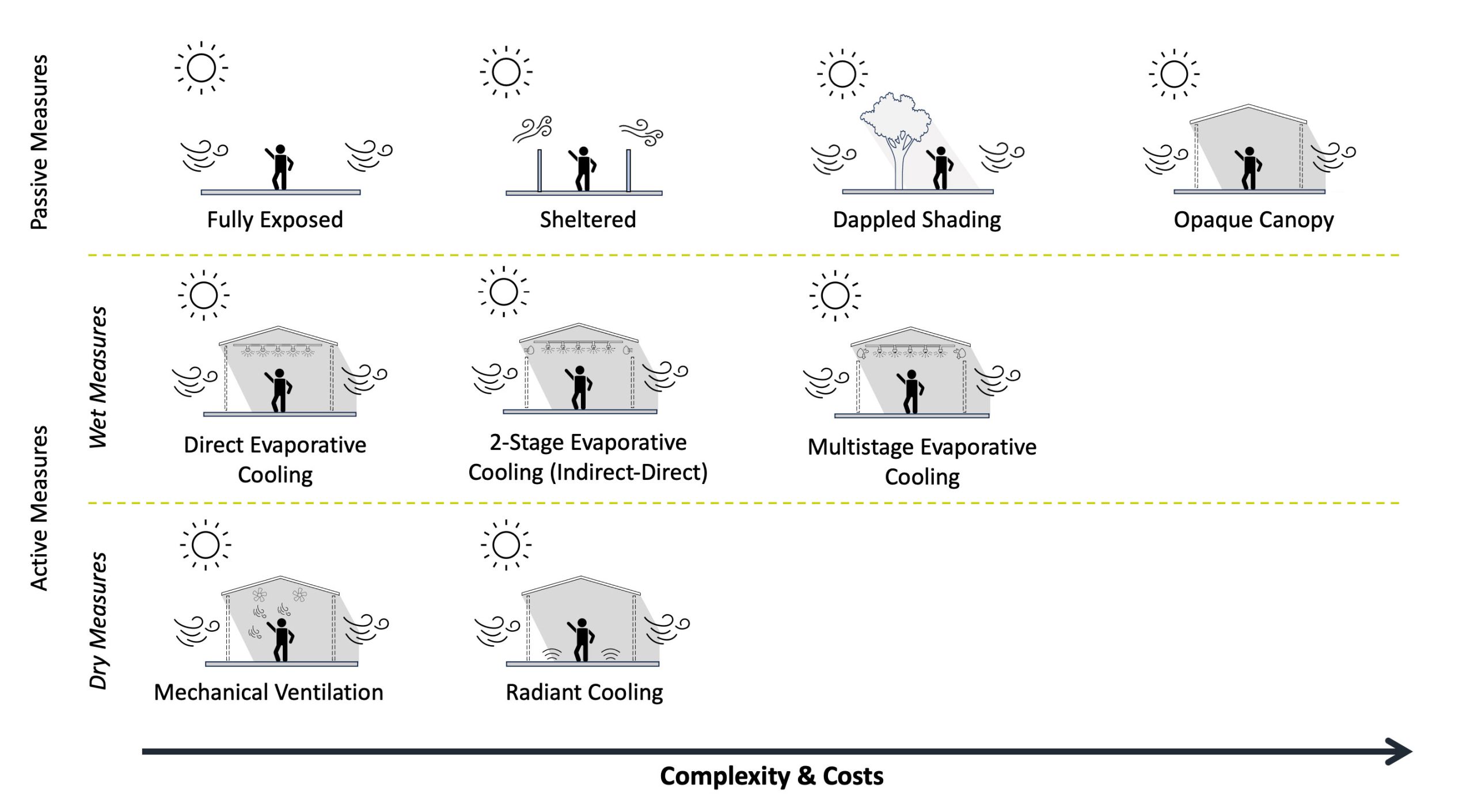
Examples of climate adaptation measures
Extreme heat poses significant health risks, especially when the Universal Thermal Climate Index (UTCI) exceeds 32°C. It also threatens commercial activities reliant on outdoor spaces, such as restaurants, sports events, concerts, and markets. The traditional concept of open grasslands for sunbathing may give way to more frequent woodlands for sun protection, and nighttime economies could become more relevant during hot summer months.
Vegetation plays a key role in adapting to a changing climate, but rising temperatures risk prolonged warm spells and water scarcity. Solutions like waterless gardens, inspired by Lanzarote’s picón concept, demonstrate how passive measures can help vegetation thrive without irrigation. This approach, tested in Sharjah (UAE), showed a local air temperature reduction of up to 3-4°C.
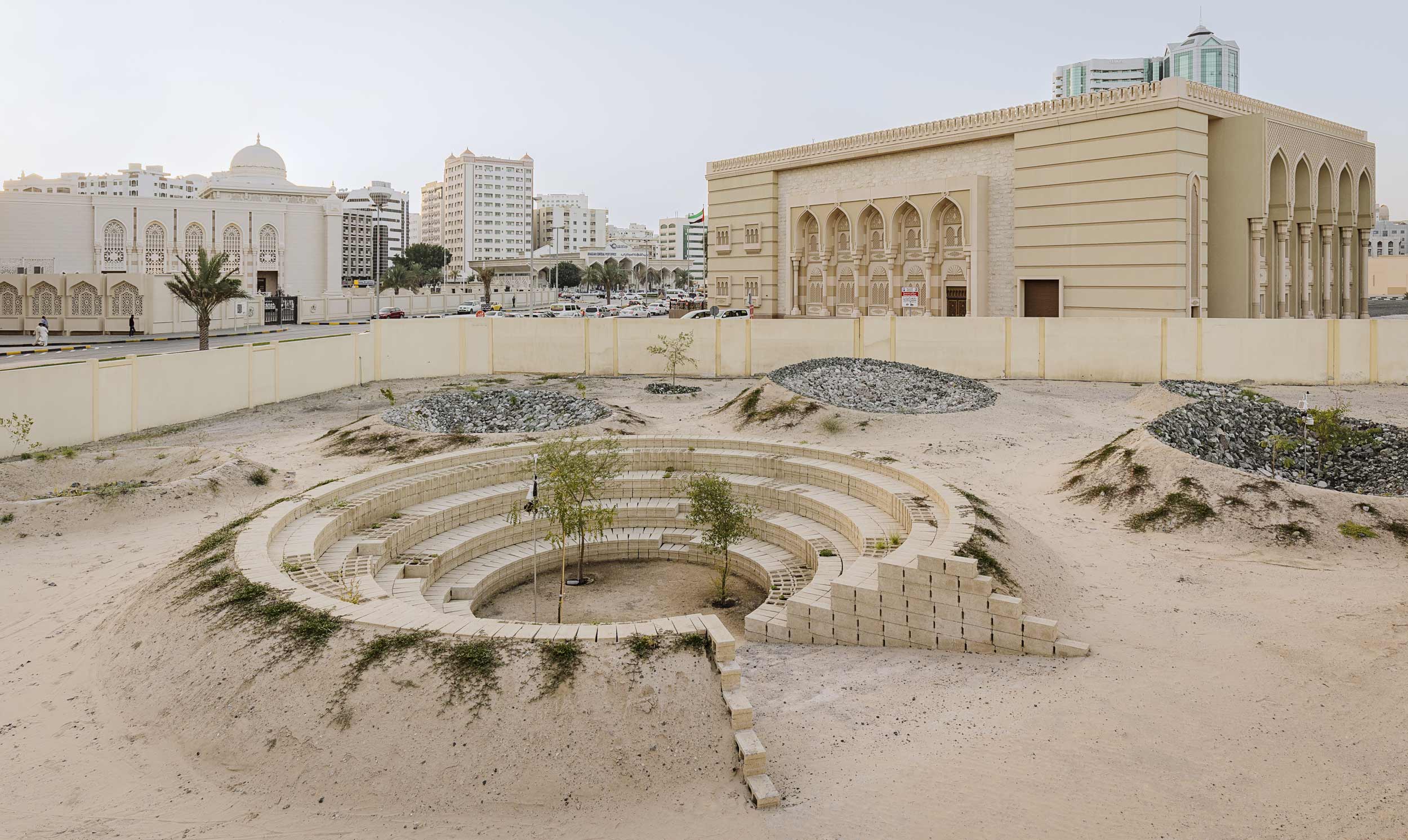
Sharjah Triennial site after completion
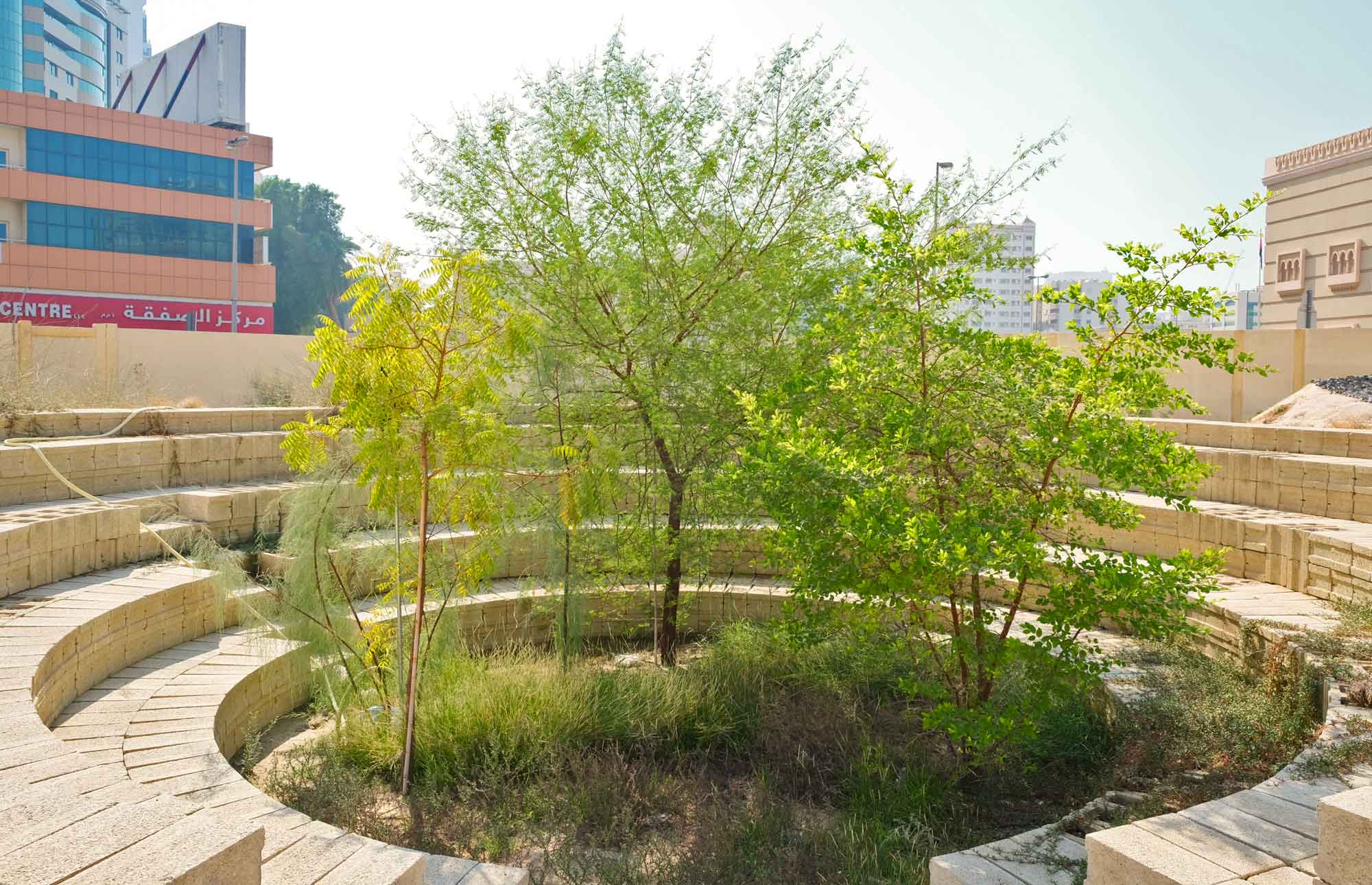
Sharjah Triennial site after only one year
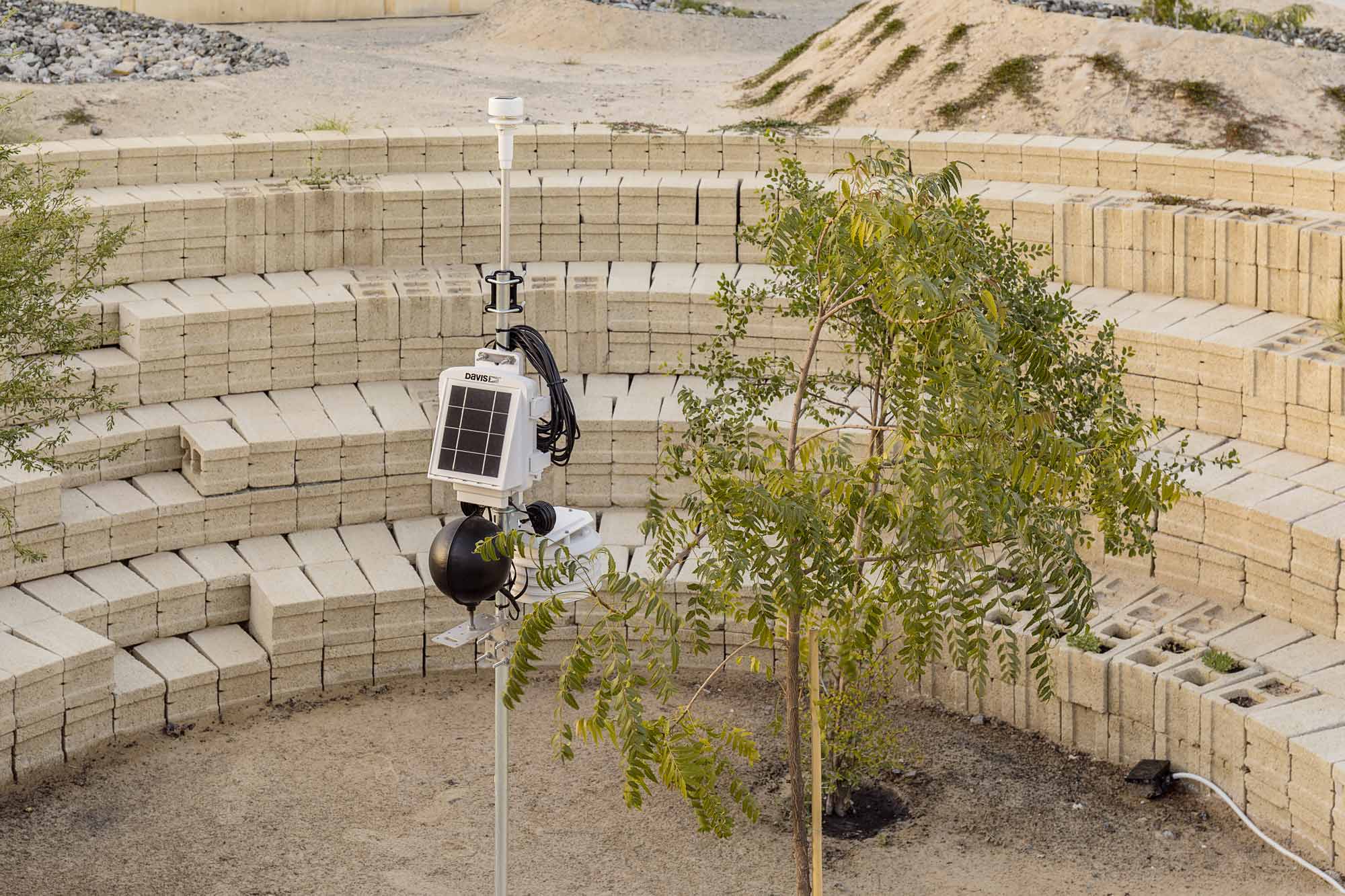
On-site monitoring stations
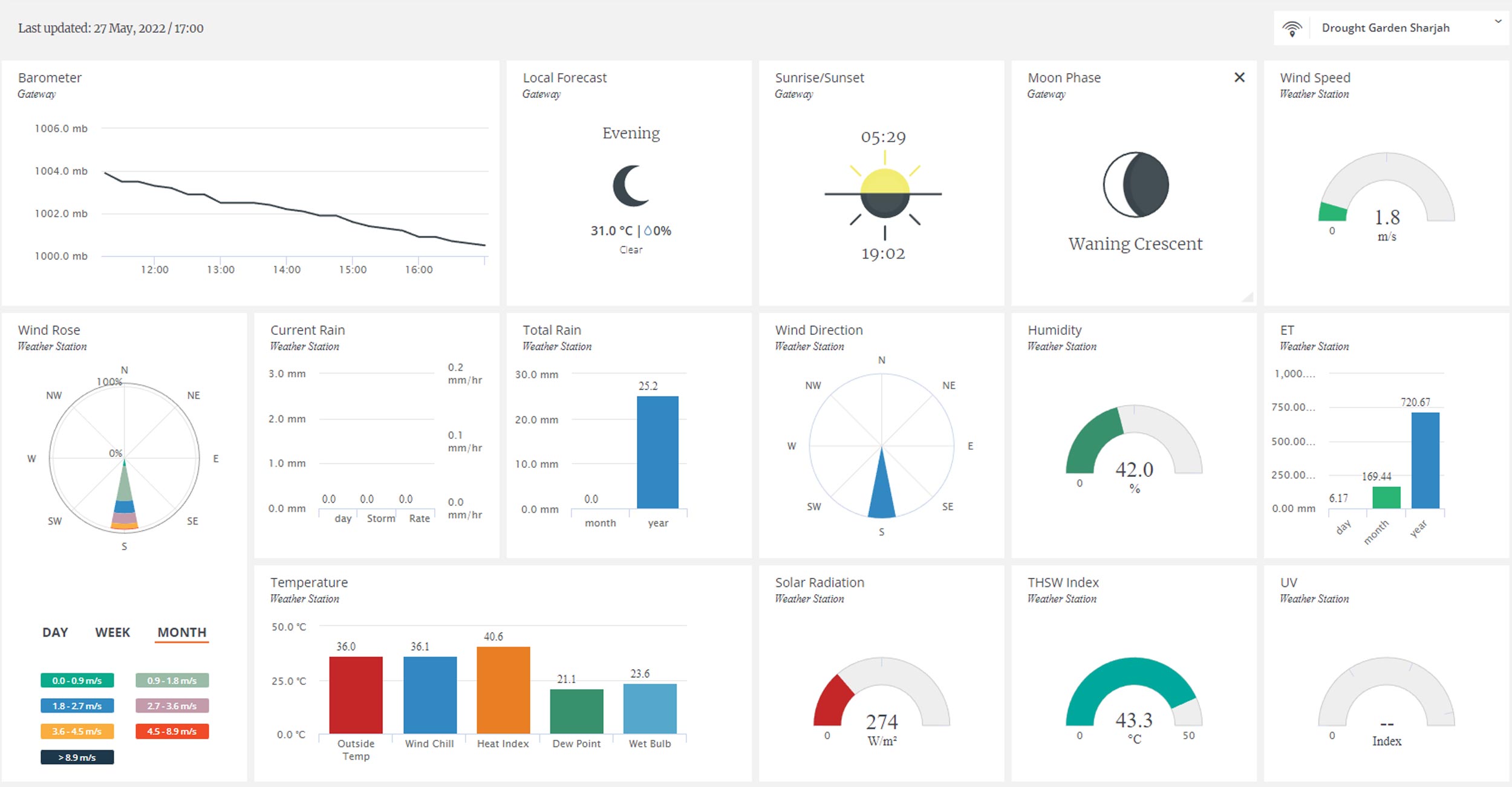
On-site monitoring dashboard
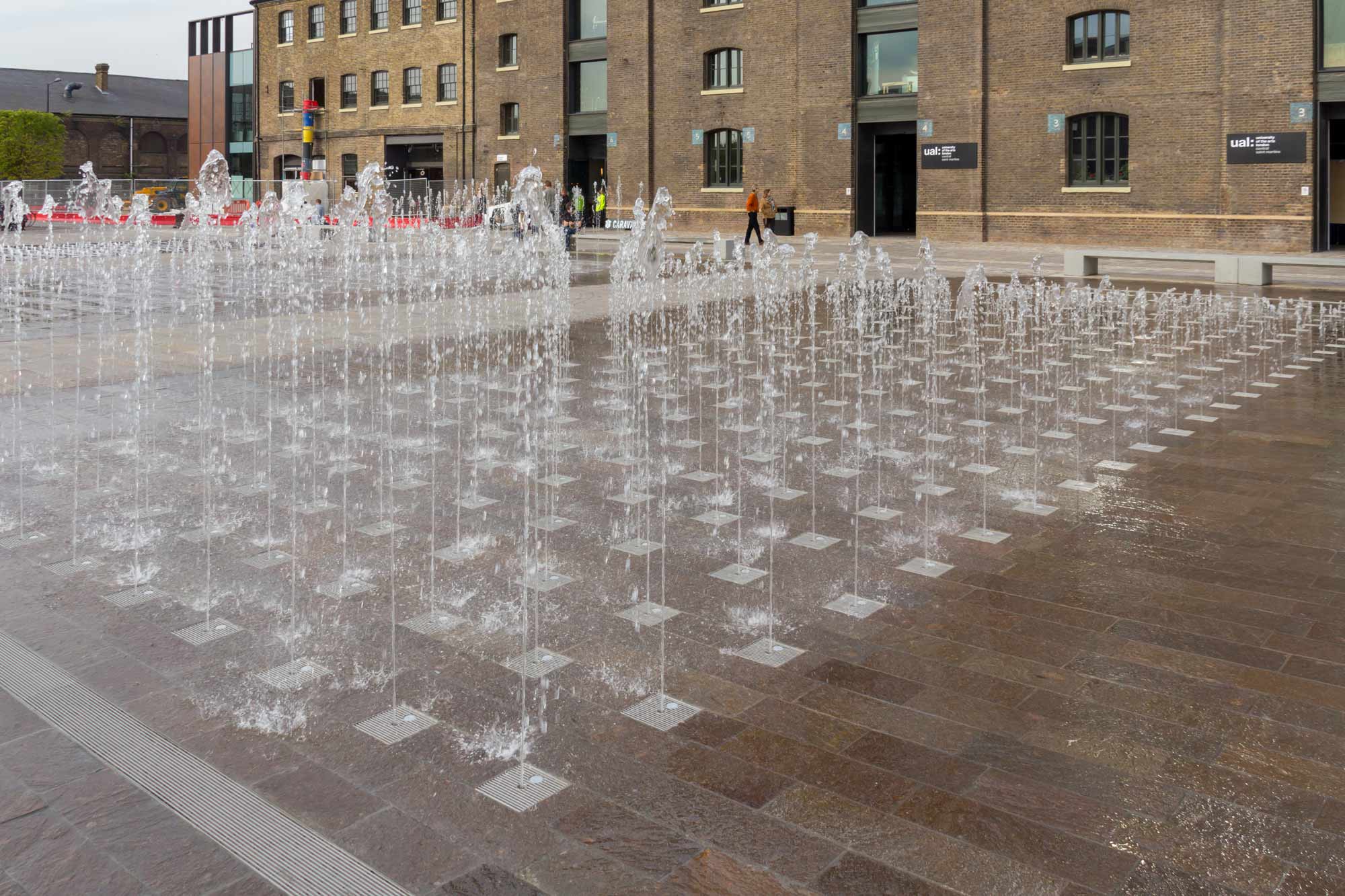
Granary Square in London showcases how water features can activate public spaces during summer, enhancing public enjoyment.
Adaptation efforts span various engineering disciplines to ensure resilience against heat, drought, flooding, and sea-level rise. However, these efforts also highlight a stark disparity: wealthier nations can implement protective measures more easily, while poorer regions, which contribute the least to climate change, suffer its gravest consequences.
Climate adaptation in the built environment is not just a technical challenge; it is a moral imperative. We must address inequities and ensure that all communities, especially the most vulnerable, have access to safe, resilient, and sustainable infrastructure. The time for decisive action is now. Coordinated efforts across all sectors and scales – from individual buildings to entire cities – are essential to build a truly resilient future.